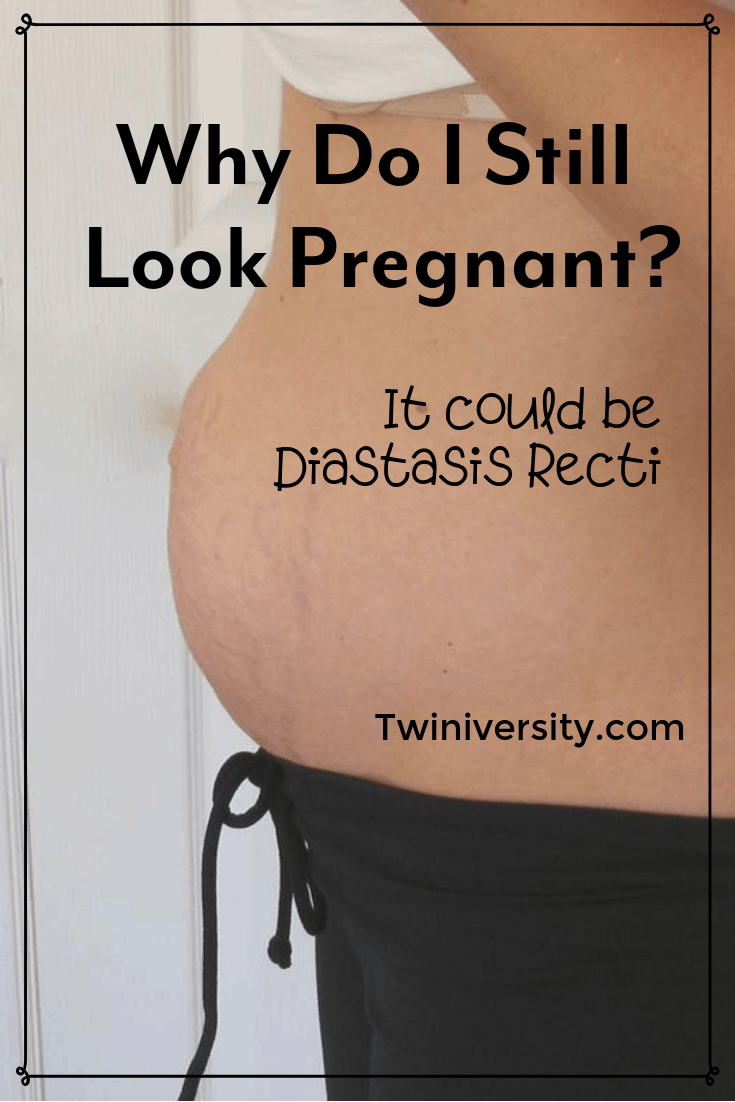Last updated on March 6th, 2024 at 08:28 am
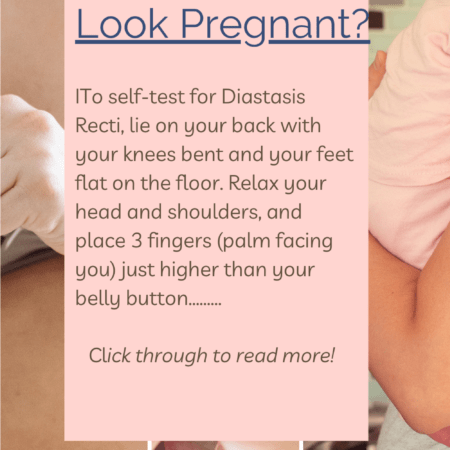
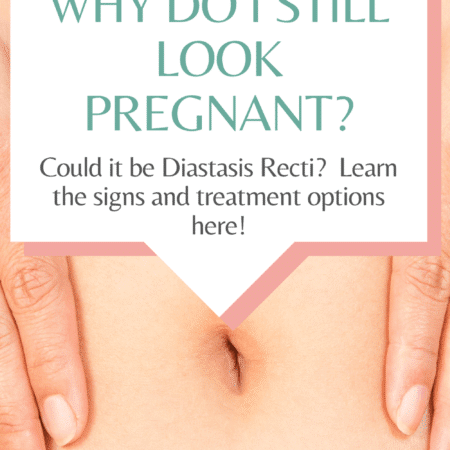
I sat in a doctor’s examining room, yet again; it had been too many times to count, and wondered if this doctor would finally be able to give me hope and the answers that I was searching for.
I had been to countless doctors and the answer was always the same, “The tests show you are healthy, you just need to lose a little weight.” Neither the tests nor the doctors could ever explain why my back always hurt, I still leaked urine when I coughed or laughed, or why I could never lose weight, and even though it had been years since having my last child why I still looked pregnant.
Based upon what I knew and had read about health and fitness, it didn’t make any sense. I ate very well and exercised like an athlete, so why did I always feel bad and look even worse? It was time to take this into my own hands.
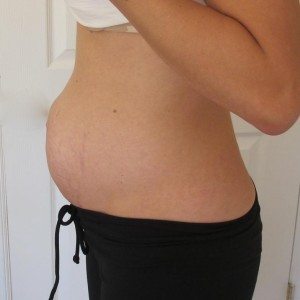
I began to read and research all that I could about my symptoms and soon I discovered that I had a medical condition called Diastasis Recti Abdominis. Diastasis Recti, or DR (for short) is a thinning of the tissues that connect the six-pack muscles to each other.
During pregnancy, excessive intra-abdominal pressure pushes outward and downward causing the tissue to stretch and weaken, at the front of the abdomen. This causes the back and organs to no longer be supported, creating symptoms such as lower back pain or a “pooched” tummy.
Pelvic organ prolapse, varicose veins, constipation, hemorrhoids, and hernias are all related, intra-abdominal high-pressure conditions. DR is so common that 2 out of 3 mothers have it, after having 2 or more babies, and many who do don’t even know they have it.
Are You a New Twin Parent?
Check out Natalie Diaz’s book:
“What To Do When You’re Having Two
The Twin Survival Guide From Pregnancy Through the First Year”
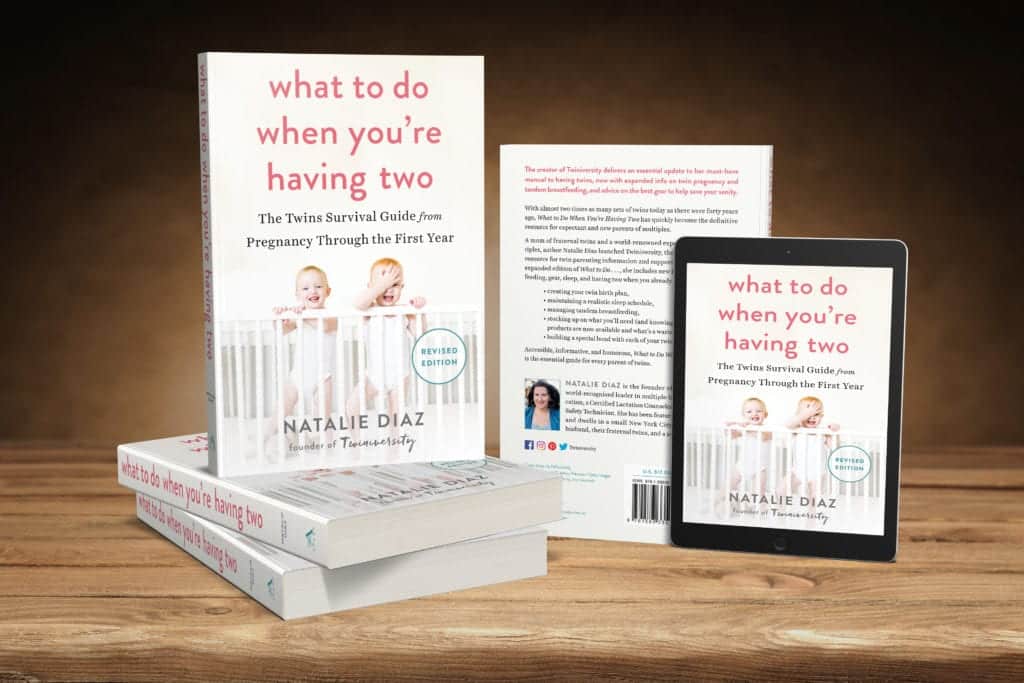
In What to Do When You’re Having Two: The Twins Survival Guide from Pregnancy Through the First Year, national twins guru and founder of Twiniversity (and twin mom herself!) Natalie Diaz provides a no-holds-barred resource about life with twins, from pregnancy and birth all the way through your duo’s first year of life.
Accessible and informative, What to Do When You’re Having Two
is the must-have manual for all parents of twins.
If you think that you may have Diastasis Recti you need to not only understand how to help your muscles to heal but also how to decrease the pressure pushing on them. And you need to be aware of what NOT to do, as some quite popular exercises will make it worse.
After doing the research I was thrilled that I could label my condition, but now I had to learn exactly what it looked like, and what I could do about it. When you have Diastasis Recti your organs will sometimes protrude through the gap, as only a thin layer of connective tissue supports them. This often appears as a cone or football-shaped protrusion (when lying on your back) or a pregnant looking belly.
Your belly button may pop out, instead of in. Your stomach will bulge more when your digestive system is full of food, gas, or a bit of both, and so many women find it appears to get progressively worse throughout the day. A severe diastasis may reveal a ‘pulsing’ of your digestive system working underneath.
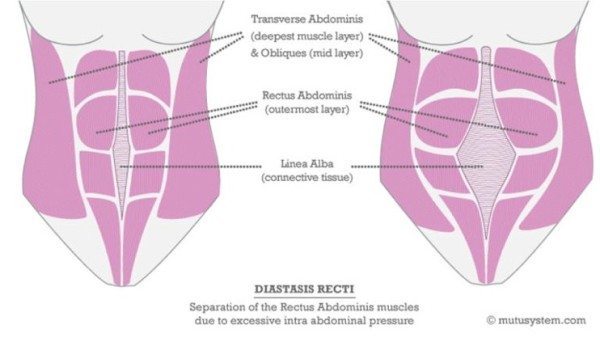
To self-test for Diastasis Recti, lie on your back with your knees bent and your feet flat on the floor. Relax your head and shoulders, and place 3 fingers (palm facing you) just higher than your belly button.
Press down gently but firmly with your fingertips, and then lift your shoulder blades slightly off the floor. You will feel the muscles close in around your fingers as you lift your head and neck. Don’t lift your shoulders up too high. Don’t hold this position for more than a second or two.
You may want to try a few times so you can feel how the muscles work. If you don’t feel the two ridges of the muscles with 2 fingers then try more. A diastasis gap is measured in finger widths. A 1-2 finger width gap or less is fine, but don’t panic if it’s much bigger at first. Test at your naval, three inches above and three inches below, in the same manner.
Next, you need to test for the condition of your connective tissue (the Linea Alba), by placing your fingers into the soft tissue. The further your fingers go into your belly, the weaker the connective tissue.
A diastasis depth is measured in inches which you can average from the tip of your finger to the first joint/knuckle which is about 1 inch, if it goes down to the second joint, its 2 inches, etc. Test the depth, in the same three places (at the naval, and three inches above and below).
I self-tested and discovered I did indeed have Diastasis Recti. I knew how big and deep it was, and I understood more about it. Now, I had to research to figure out what to do about it. I started by going back to square one, my doctor, who agreed with me and diagnosed me with both Diastasis and an umbilical hernia (which is due to the pressure that causes DR). The doctor informed me that the only option I had was surgery, which I was not willing to accept. After more research, I discovered other options.
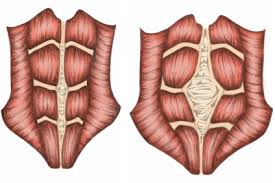
First I tried a program that was created by a nurse, who seemed to have a lot of good results with “closing the gap” of the abdominal muscles, by using a band and internal exercises.
My results were fair, however, I was distraught to find that after all the work to bring the muscles back together and wearing an abdominal band 24×7, I had very little core strength. My muscles were very weak and I could not properly function when trying to do intensive fat-burning exercises or even just daily activities. To my dismay my DR widened a little more after I stopped wearing the band.
Just recently, I discovered a holistic program that focused on more than just “closing the gap”. Instead, it takes into consideration the entire body, from the way that your alignment affects your Diastasis to the proper nutrition to help heal your connective tissue.

Have you taken your expecting twins class yet? We offer a great class on demand so you can take it on your own schedule! There are so many video modules covering everything from your twins’ baby registry to your first week at home with twins!
Sign up today to get started before your twins arrive.
It offers good advice, from understanding the science behind it all to the emotional connections that come about due to the way we feel and look. The exercises start out gentle and take into consideration even the weakest of cores, and then gradually progress to help create strong natural support, proper alignment, and an increase in the metabolism to help burn body fat.
If you have similar symptoms, or you have people stopping and asking you when your next baby is due even though it’s been years since you last had one, or you are just fed up with the way you look and feel, know that there is hope and you can do something about it.

Angela G. Willis is a work-at-home mom of three boys. She has struggled with Diastasi Recti (DR) for 14 years, since the birth of her first son. Looking for an answer led her to try many options. Right now she is working on strengthening her core by using a program called MuTu and journaling about it in a private Facebook group. To learn more about DR and MuTu, you can follow her journey on Facebook by sending her a message telling her that you read about DR in Twiniversity.
Related Articles
- What You Need to Know About Abdominoplasty and Diastasis Repair
- The Big Rediscovery: Reclaiming Yourself After Twins
- How Long Will It Take to Get My Pre-Pregnancy Body Back After Twins?
- Body Image After Twins: Learning to Love Yourself Again
- Strengthening Your Postpartum Body

Want to be the first to know about giveaways, deals, and more just for twin parents? Sign up for the Twiniversity email list! Subscribe today to get emails about giveaways, events, weekly article roundups, and more! Pregnant with twins? We’ll be sending you a weekly twin pregnancy email to keep you on track with your pregnancy to-do list! Click here to learn more… and while you’re at it, check out our Complete Baby Safety Course and Twin Parent Memberships.
